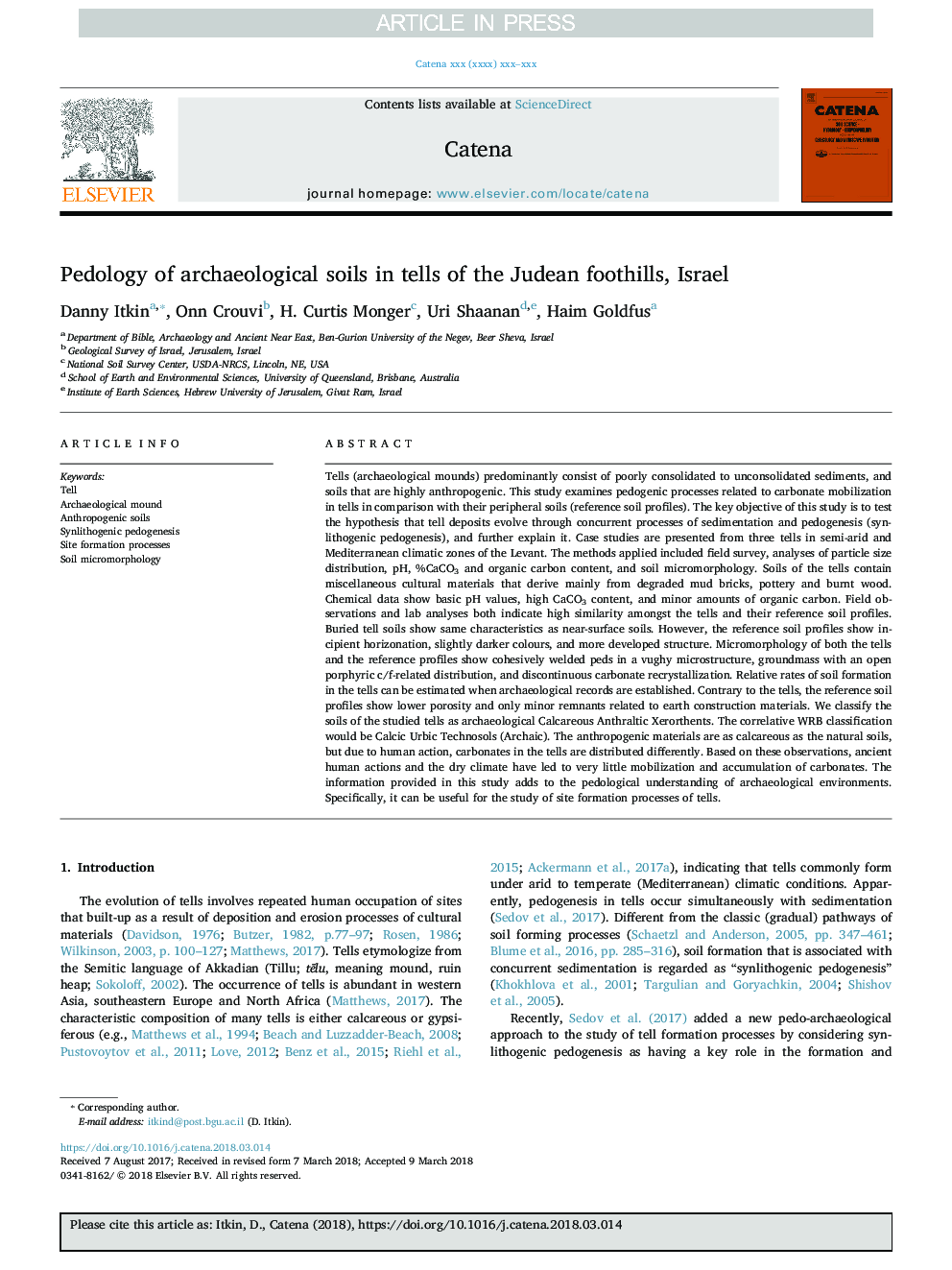| کد مقاله | کد نشریه | سال انتشار | مقاله انگلیسی | نسخه تمام متن |
|---|---|---|---|---|
| 8893446 | 1629186 | 2018 | 15 صفحه PDF | دانلود رایگان |
عنوان انگلیسی مقاله ISI
Pedology of archaeological soils in tells of the Judean foothills, Israel
ترجمه فارسی عنوان
باستان شناسی خاک های باستان شناسی در مورد فرمانروای یهودیه، اسرائیل می
دانلود مقاله + سفارش ترجمه
دانلود مقاله ISI انگلیسی
رایگان برای ایرانیان
کلمات کلیدی
موضوعات مرتبط
مهندسی و علوم پایه
علوم زمین و سیارات
فرآیندهای سطح زمین
چکیده انگلیسی
Tells (archaeological mounds) predominantly consist of poorly consolidated to unconsolidated sediments, and soils that are highly anthropogenic. This study examines pedogenic processes related to carbonate mobilization in tells in comparison with their peripheral soils (reference soil profiles). The key objective of this study is to test the hypothesis that tell deposits evolve through concurrent processes of sedimentation and pedogenesis (synlithogenic pedogenesis), and further explain it. Case studies are presented from three tells in semi-arid and Mediterranean climatic zones of the Levant. The methods applied included field survey, analyses of particle size distribution, pH, %CaCO3 and organic carbon content, and soil micromorphology. Soils of the tells contain miscellaneous cultural materials that derive mainly from degraded mud bricks, pottery and burnt wood. Chemical data show basic pH values, high CaCO3 content, and minor amounts of organic carbon. Field observations and lab analyses both indicate high similarity amongst the tells and their reference soil profiles. Buried tell soils show same characteristics as near-surface soils. However, the reference soil profiles show incipient horizonation, slightly darker colours, and more developed structure. Micromorphology of both the tells and the reference profiles show cohesively welded peds in a vughy microstructure, groundmass with an open porphyric c/f-related distribution, and discontinuous carbonate recrystallization. Relative rates of soil formation in the tells can be estimated when archaeological records are established. Contrary to the tells, the reference soil profiles show lower porosity and only minor remnants related to earth construction materials. We classify the soils of the studied tells as archaeological Calcareous Anthraltic Xerorthents. The correlative WRB classification would be Calcic Urbic Technosols (Archaic). The anthropogenic materials are as calcareous as the natural soils, but due to human action, carbonates in the tells are distributed differently. Based on these observations, ancient human actions and the dry climate have led to very little mobilization and accumulation of carbonates. The information provided in this study adds to the pedological understanding of archaeological environments. Specifically, it can be useful for the study of site formation processes of tells.
ناشر
Database: Elsevier - ScienceDirect (ساینس دایرکت)
Journal: CATENA - Volume 168, September 2018, Pages 47-61
Journal: CATENA - Volume 168, September 2018, Pages 47-61
نویسندگان
Danny Itkin, Onn Crouvi, H. Curtis Monger, Uri Shaanan, Haim Goldfus,
